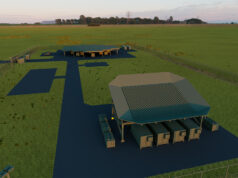Skynet 5, one of the most successful private finance initiative (PFI) investments made by the UK government, will end in 2022.
This article was written by Ken Peterman, President, Government Systems, at Viasat, and is intended as a discussion around the Skynet 6 programme.
While the programme has met the operational standards of UK military forces over the past 20 years, we have seen unprecedented technological advancements made by the private sector over the last decade.
It will be critical for the Ministry of Defence (MoD) to take advantage of these private sector innovations as it moves to the Skynet-6 programme, especially as it finds itself adjusting to several new realities:
- A new generation of warfighters who have grown up accustomed to an always-connected civilian way of life;
- Increasingly sophisticated coalition operations and multi-agency collaboration;
- Advanced threats by near-peer adversaries;
- Financial stringency within the MoD as it relates to existing PFI programs; and
- A traditional procurement model that does not fully leverage the rapid technology trajectories occurring across the private sector.
The UK has an enormous opportunity to make the most of new capabilities being driven by private sector satellite communications (SATCOM) providers. These private sector advancements will satisfy emerging mission requirements, optimise existing assets, provide access to new technologies, and deter near-peer adversaries – all at a low cost and low risk to the MoD.
A new approach
With a number of near-peer adversaries, including China, moving to enhance military space capabilities, it is imperative the UK government act quickly to develop a SATCOM architecture that provides the MoD and coalition forces with the capabilities required to maintain a tactical edge across today’s battlespace. The UK government must move to a service-based open architecture SATCOM model. By moving to an interoperable network that combines the power of government purpose-built systems with the rapid technological advancements being driven by the private sector, the MoD can easily transition to the high-speed, secure, resilient and ubiquitous system required to adopt new and emerging technologies and deter near-peer adversaries.
In addition, the MoD should look to host sponsored pilots to empirically measure and quantitatively assess “operational effects” being implemented by private sector leaders in order to significantly reduce integration and implementation costs and risks. The operational effects are those that provide access to the means necessary to improve performance and resilience; optimise existing assets; adapt to emerging technologies; and outpace adversary threats. These operational effects include:
- Assured capacity and speed of service to each user, asset and/or device even in contested or congested areas of operations where multiple assets must be supported simultaneously in the presence of jamming, cyber outages, fibre outages and extreme weather conditions, among others.
- Network layering: Network resilience with management and control with alternate pathsto rapidly move users among multiple satellite beams, overlapping service layers, and connectivity alternatives in real-time. This will provide improved resiliency, deterrence, and redundancy as it offers a multi-band, multi-network option, allowing the user to manoeuvre or roam across satellite networks and ensuring operations through threats and jamming attempts.
- Scalability: Always accessible, available and easily scalable to support rapid, unscheduled access to the network.
- Prioritisation: The SATCOM service must support prioritised missions and automatically prioritise users to ensure the highest priority missions take precedence above all others.
- Real-Time Network Situational Awareness: Users and network operators should have continuous, real-time visibility into all the network services layers and user devices to gain insight into warnings, correlate threats, respond to network and space segment attacks/disruptions and have the ability to analyse, respond and automatically recover services in near-real time. The Multi-Domain Operations Concept is predicated on this integrated concept; the best SATCOM service providers are already offering service plans that are moving toward doing this.
- Real-time visualisation: Network managers should have access to a real-time dashboard of user status, including beam usage statistics and individual user performance. In addition, management and control applications should be in place to monitor, assess, plan and execute assured communications for joint missions that scale to hundreds of simultaneous operations.
- Real-time active cyber defence: A system that monitors correlates, and attributes threats with real time visualisation, analysis, management and response; and synchronises activities with the network and user mission operation centres to assure network security and mission execution.
The future is available today
Today’s private sector SATCOM leaders are capable of providing these operational advances today. Some have argued it may be difficult to determine the right mix of government-owned satellites and commercial broadband services if the MoD chooses to move away from a single vendor to an interoperable network. But the reality is today’s hybrid networks available in the private sector will provide a nearly seamless transition to Skynet-6 as well as access to a range of advanced capabilities that will fulfil emerging mission requirements.
For example, the MoD has the ability to quickly acquire and deploy new SATCOM capabilities by leveraging concepts such as HAN satellite architectures. These flexible Service Delivery Platforms meet the need for a robust, scalable communications network built on open standards, avoid vendor lock, and leverage the exponential technology growth of the private sector to close warfighter gaps.
In addition, HANs maximise warfighter capabilities and resilience today by providing simultaneous access to both commercial and government networks via an open interface at the network layer. This enables HANs to readily embrace future innovative satellite networks; span multiple orbital regimes including LEO, MEO, and GEO; and operate over multiple networks including Ka, Ku, High Capacity Ka and Mil-Ka.
This sophisticated end-to-end layered network will also provide access to a number of advanced capabilities including the adoption of new advanced battlefield technologies such as AI and machine learning applications at a much faster rate, by providing better interoperability between commercial and military systems.
By adopting HAN architectures already available today, it’s clear the MoD has an enormous opportunity to optimise existing assets, adapt to emerging technologies, and outpace adversary threats.
As the UK government and military move toward Skynet-6 they must look to collaborate with private sector satellite communications providers to address the SATCOM challenges of today whilst preparing for the missions of tomorrow.
[su_spacer]
 |
About the author – Ken Peterman
Ken joined Viasat in April 2013 as Vice President, Government Systems. In June 2014, he was appointed Senior Vice President, Government Systems, and in May 2017, he assumed his current position as President, Government Systems. Ken has over 30 years of experience in general management, systems engineering, strategic planning, portfolio management, and business leadership in the aerospace and defense industries. Previously, Ken served as Vice President and General Manager of Rockwell Collins Government System’s Integrated C3 Systems and Rockwell Collins Displays and Awareness Systems. |












Interesting post!
“New Pentagon report warns of Russian and Chinese laser threats to U.S. satellites
Attached!!!
http://cnnphilippines.com/world/2019/02/12/pentagon-russia-china-laser.html
To think 1001SU used to run all this.
Useless fact alert: Actually the UK’s Skynet military satellite program pre-dates Terminator by about 15 years with the first satellites launched in 1969, although they didn’t really hit their stride until the mid-70’s.
It is amusing that these public/private deals are applauded when they go well and yet it was the biggest mistake ever to even consider it, when they go less well.
Realistically every option comes with pros and cons, same with total public options (more upfront cost which means funds aren’t available and therefore capability cuts).
Most of the ground based monitoring decribed for the systems is already in place in the GOSCC. (well worth a visit if you ever get the chance)
The issue with the PFI was the cost. When the MOD discovered everyone wanted a satcom connection the contracted and previously agreed bandwidth requirements skyrocketed along with the cost. That’s no body’s fault. Skynet5 and the MOD where victims of their own success and Astrium has profitted.
On the plus side the MOD has been forced to look back to old school HF comms but now using modern waveforms and algorithms to take some of the data load off the Satcom links.
Only seen photos and will never get the chance sadly. Very impressive site. Not surprising considering what they spent on it and what was there beforehand!
Have you been to the old 1001SU site up the road Gunbuster? Is some of the SATCOM work still there?
“Genesis IS Skynet.” Just saying.